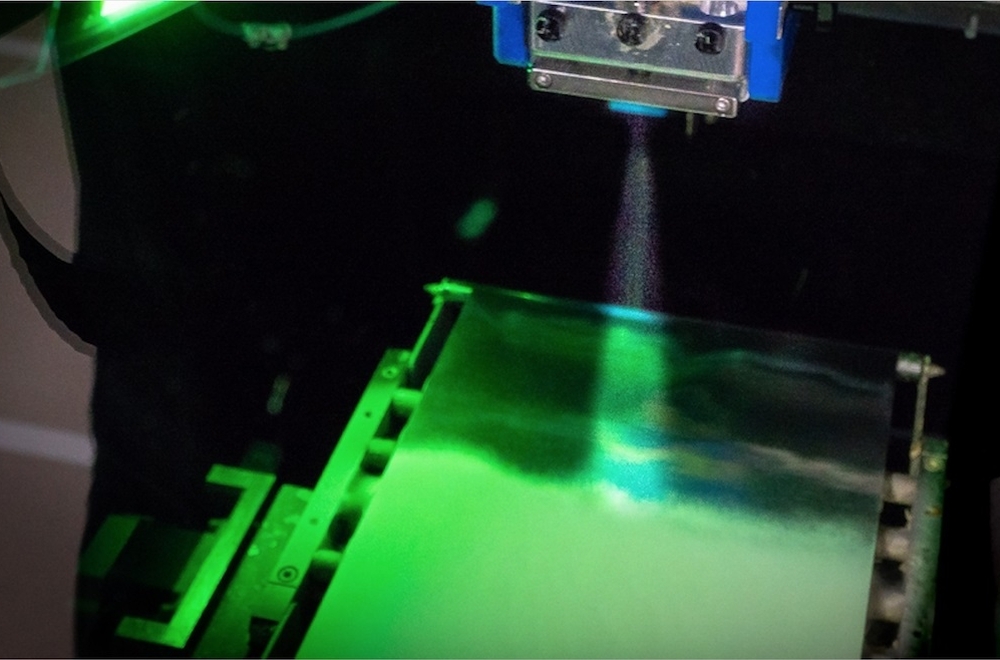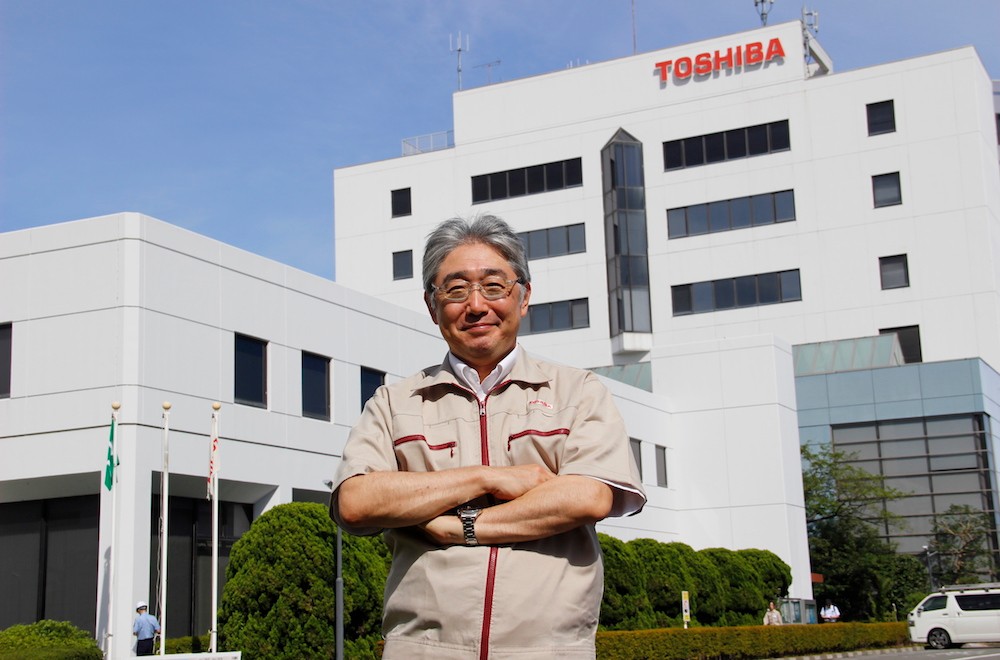Exploring the Secrets of Engineering and Maestro through Motion Capture
2019/10/02 Toshiba Clip Team
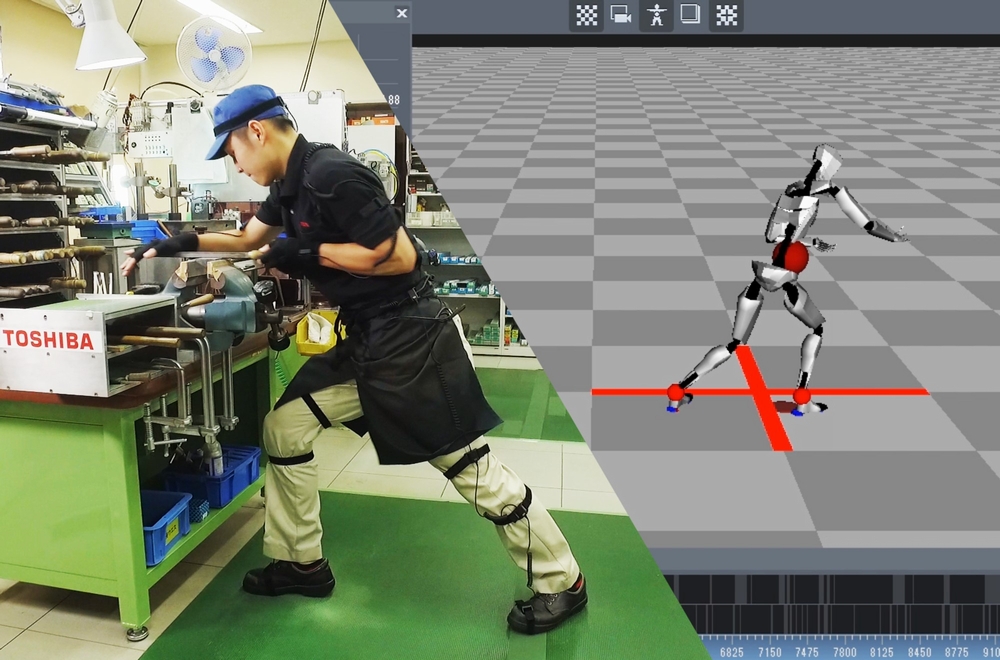
“I think I’ve become pretty good, but there’s always someone better. I want to see how high I can go.”
At the National Skills Competition held in Japan, young people working in all kinds of skilled jobs measure their capabilities against one another. Aged 23 or younger, they all have one thing in common: to be the very best at what they do. The competition is fierce and the top-class talents it attracts hone their skills with rigorous training regimes. In the three months after the theme for the competition is announced, participants practice the same things over and over again from morning to evening, 9 hours a day, 5 days a week.
One young man knows how hard it is, but he is still determined to take part in this year’s competition and pit his skills against the rest of Japan. Meet Haruki Okabe, 21 years old, who works for a Toshiba’s group company, Kitashiba Electric Co., His instructor is Tatsuo Matsui, a 66-year old veteran technician with 50 years of experience, who now works for Toshiba Human Resources Development Corporation. We dropped in to see what their training looked like. The practice hall is lined with a variety of tools. It’s only natural for technicians to be there, but there’s a surprising visitor among them as well: Hiroaki Nakamura, a motion capture engineer from the Toshiba Corporate Manufacturing Engineering Center. He had helped Okabe and Matsui in the training.
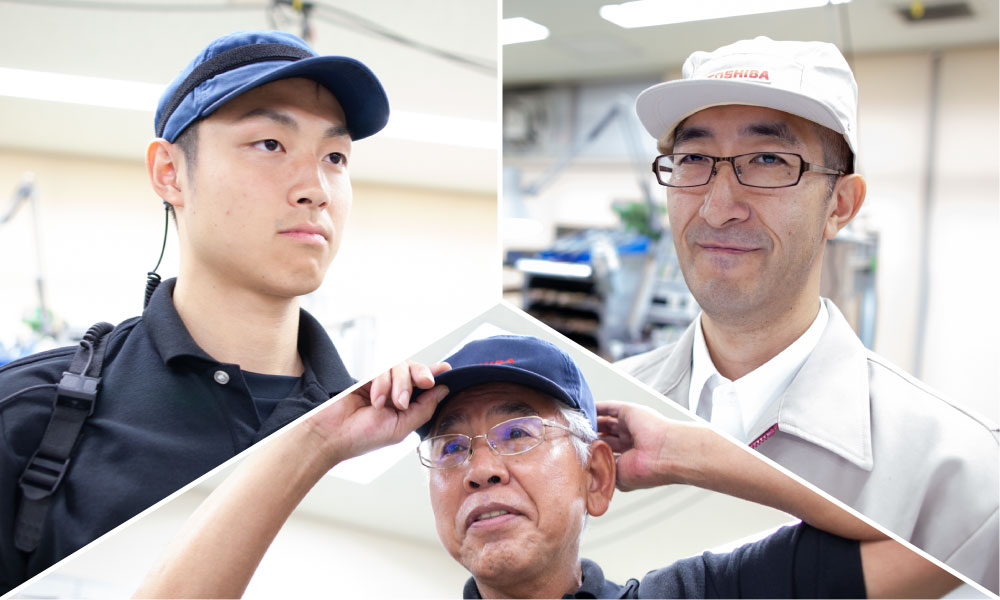
From left to right: Haruki Okabe, Okabe’s instructor Tatsuo Matsui, and motion capture engineer Hiroaki Nakamura
Motions speak louder than words
Nakamura specializes in human engineering (*), using motion capture (mo-cap) to digitally measure the movements of real human beings and objects. Toshiba has started an initiative where it uses mo-cap to capture the training of The National Skills Competition participants, in order to improve the efficiency of instruction and the passing on of skills.
*A science that designs objects and environments so that people can act as efficiently as possible.
“Conventional mo-cap uses cameras to measure motion, but you need a lot of cameras to record everything without any blind spots, which costs a lot of money. You can use it to cover first-class athletes, but it’s not really suitable for the production floor. That’s why Toshiba’s training uses sensors instead.” (Nakamura)
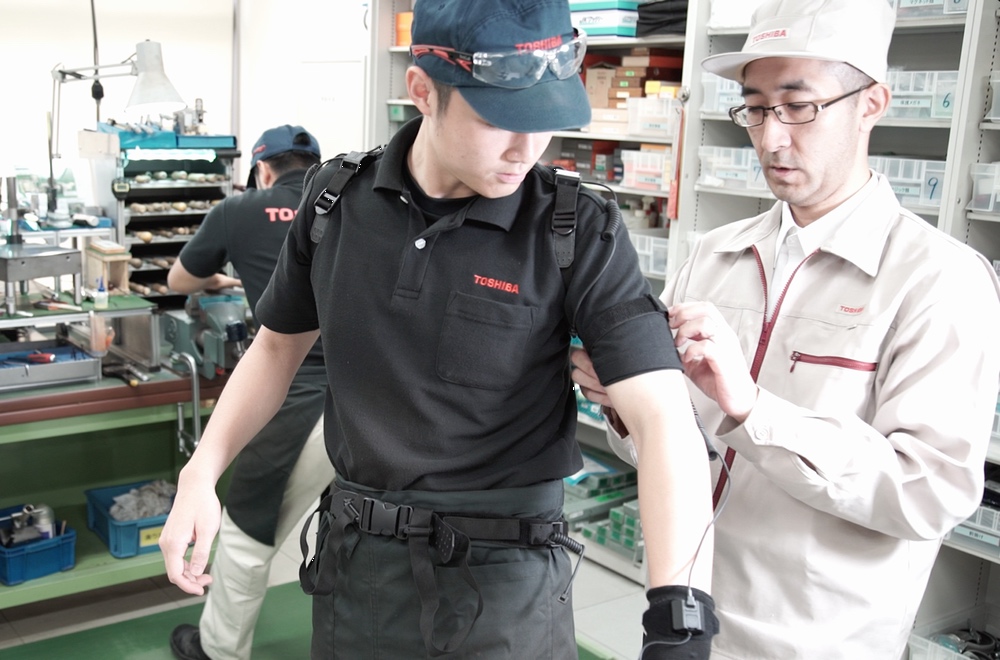
Nakamura helping Okabe put on the motion capture sensors
Sensor-type mo-cap measures body movements through attached accelerometers, which are also used in smartphones. Sensors are cheaper than cameras, and it is faster to put them on than to set up cameras.
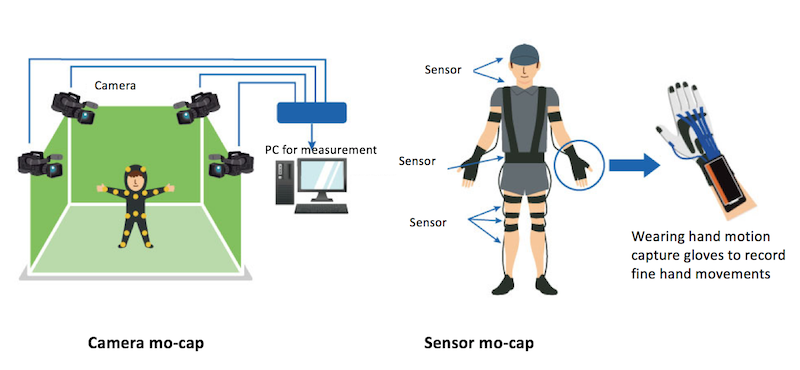
The difference between camera mo-cap and sensor mo-cap
Okabe will be participating in the Mechanical Device Assembly Competition. In Machine Device Assembly, competitors have to use a file to finish a number of parts made through machining. They then have to assemble and adjust the parts to create a small high-precision unit device which can carry out specific functions. First-class technicians can file down parts that would be shaved too much by machining with a precision of 0.001mm or less. If the precision is off even slightly, the device will not work.
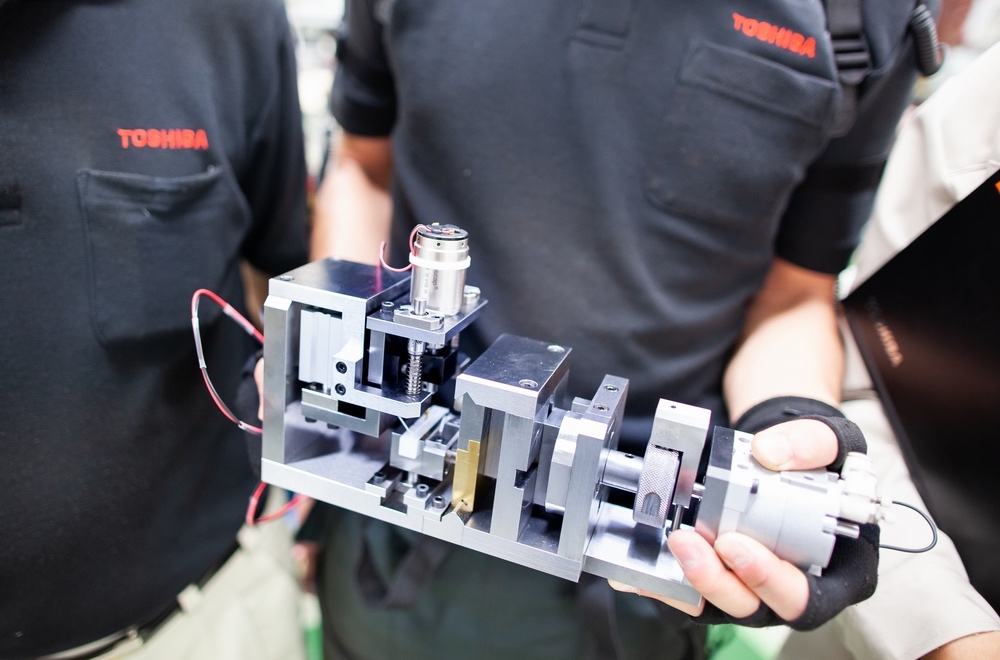
A device created through machine assembly
One of the key issues Okabe has to deal with is his posture.
“I’ve been told many times that I’m leaning too far forward. And I can tell that my posture is bad when I watch the videos. Mr. Matsui is trying his hardest to help me get the ‘feel for it,’ but it’s extremely hard for me to figure it out just by observing my form.” (Okabe)
“I can teach him that his posture is wrong, but it’s hard to explain more than that in words alone. Participants in the National Skills Competition have 6 hours and 45 minutes to complete their work. That requires a lot of stamina, so a forward-leaning posture will only wear him out.” (Matsui)
That’s where Nakamura came in. He used mo-cap to capture the full-body motions of both men, revealing some truly interesting insights into the ways the parts of the body work together.
Unraveling the mysteries of fatigue through motion capture
“When we compared their data, one major difference we noticed was how they balanced on both legs. Pay close attention to the blue and green lines that show the average amount of ground reaction force applied to the left and right legs. Okabe has a larger difference (red arrow) in the values for both legs compared to Matsui. In other words, Okabe’s center of gravity is concentrated at the front of his feet. The reason why Matsui realized through experience that leaning forward tires you out is because your center of gravity is too far forward in that position.” (Nakamura)
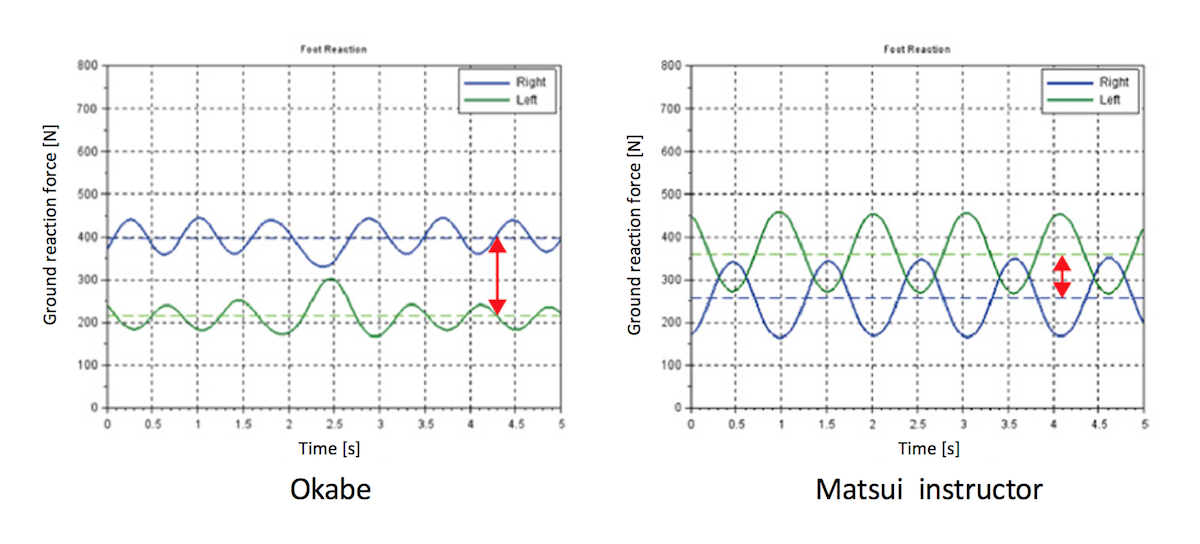
The vertical axis is the floor reaction force (amount of strength in the legs) [N] and the horizontal axis represents time [s]. Since Okabe’s center of gravity is more concentrated on one leg compared to Matsui, there is a wide gap between his blue and green lines. Note that since Okabe is left-handed while Matsui is right-handed, the foot they put the greater amount of strength in is reversed.
There are a number of companies that use mo-cap when training technicians, but almost all of them focus only on part of the body. Toshiba’s training, on the other hand, measures the whole body and analyzes it through a musculoskeletal simulation. The greatest benefit we gain from this is an understanding how the various parts of the body interact.
“If instructors and videos teach you from an external perspective, then we can say that mo-cap teaches you from the inside out. It takes more than just form to make a first-class technician truly first-class. For one thing, there’s a connection between posture and center of gravity. That optimized link between various parts is intrinsic to the bodies of skilled technicians.” (Nakamura)
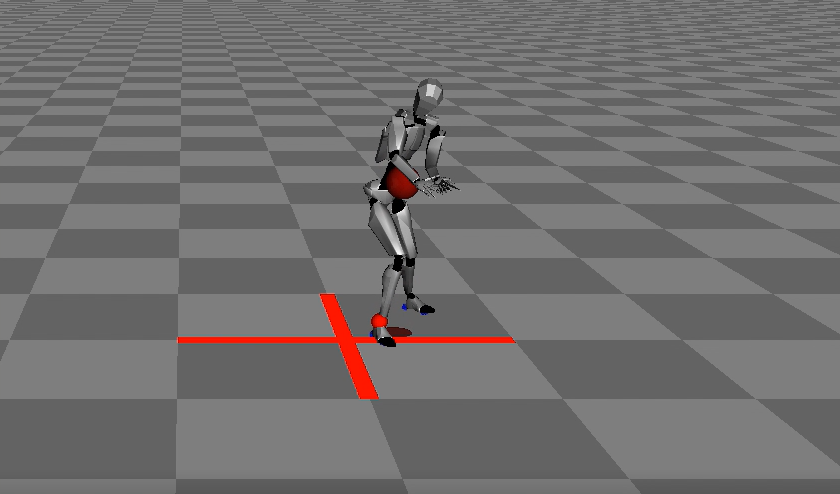
Reproducing the movements of Okabe measured with motion capture on the computer
We have only just started training technicians with mo-cap. There are still huge hurdles to overcome.
“It’s essential to improve the connection between how things look on the outside and what is going on inside the body. For example, we prioritize sound when we teach. What you hear when the file is touching and filing the materials correctly is different from the sound that’s made when it’s aligned wrongly. I’d like to use mo-cap to measure how the effort is applied and then link that to the differences in sound.” (Matsui)
“The mo-cap sensors are light, but the belts still add some pressure, so it’s different from the environment of the actual contest. Thus one of our challenges is creating more simplified mechanisms that can use sensors for measurement.“(Nakamura)
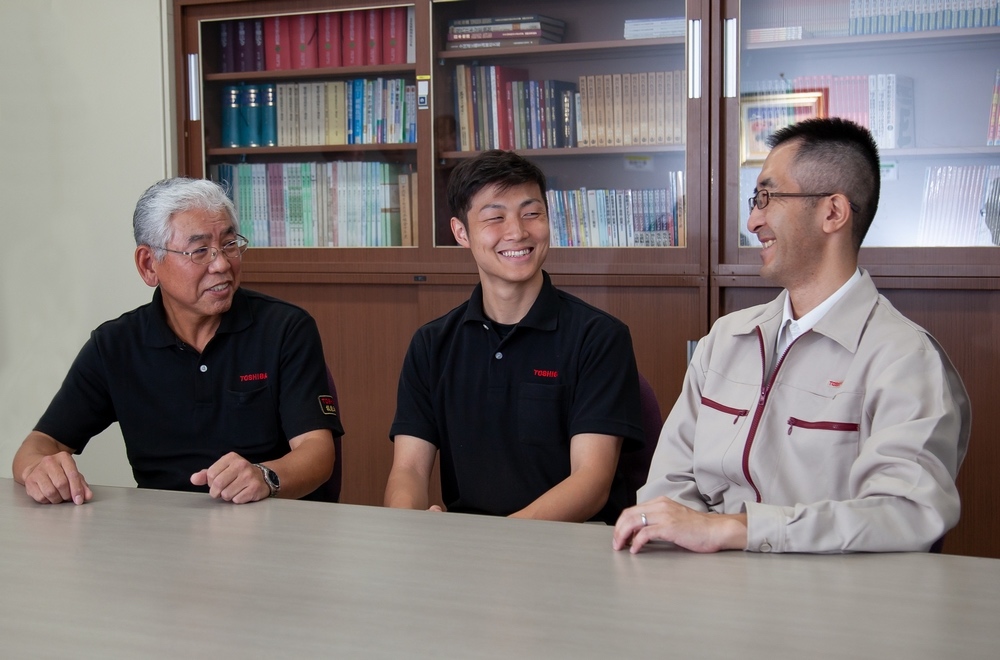
The three men discussing the current and future uses of motion capture
We finished by asking both the young and veteran technicians their thoughts on the potential of mo-cap.
“Seeing the data helped me confirm that the things I’ve been teaching from experience aren’t wrong. A forward-leaning posture leads to fatigue. There’s no doubt that as your skills improve, you have to learn to move your body in ways that fit its unique characteristics. And you do that not through mo-cap but through trial and error. But before you get to that point, it’s essential to learn the basics. I’m sure mo-cap will increase the speed at which young technicians pick up skills.” (Matsui)
“It’s not easy to get rid of ingrained habits. I think understanding something from the heart is the shortcut to improving your skills. That means understanding things from two aspects: ‘how it feels when you look at it externally’ and ‘how the strength in your body works.’ That’s where the significance of mo-cap really comes into play.” (Okabe)
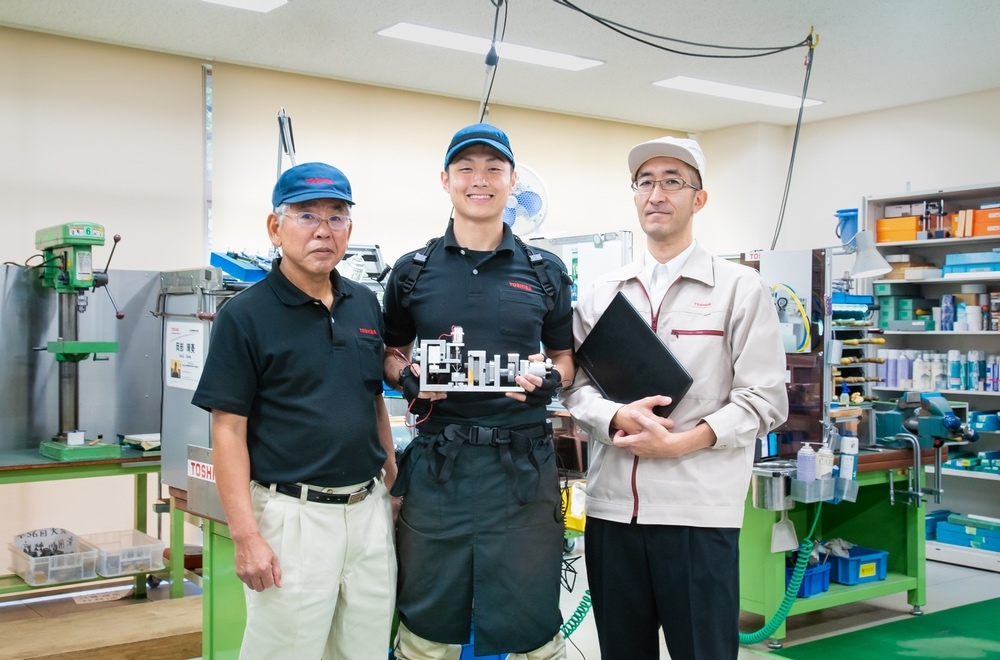
From left to right: Matsui, Okabe and Nakamura
This article is English version of Toshiba Clip (Japanese) released on 10th Oct. 2018.
Okabe won bronze prize at the 56th National Skills Competition in 2018.
![]()





